Abstract
Total antibody binding of ragweed antigen E (AgE) and IgE antibody of AgE were quantitatively measured in serum from eleven patients given immunotherapy with purified AgE. From these data the contribution of antibody other than IgE, presumed to be mostly IgG, to total AgE binding could be determined. Binding of AgE by antibody other than IgE antibody was considered to be due to blocking antibody. As immunotherapy progressed, IgG antibody binding of AgE and the IgG/IgE binding ratio were serially determined. IgG antibody binding of AgE increased from a pretreatment mean of 238 ng AgE bound/ml to 3142 ng AgE bound/ml just prior to the first ragweed season and reached a peak of 4286 ng AgE-bound/ml. Although blocking antibody thus increased progressively with treatment it was not correlated significantly with symptom scores. The IgG/IgE binding ratio increased from a pretreatment mean of 19-290 just prior to the first ragweed season and reached a peak of 1167. This ratio was related significantly to symptom scores reported by patients during the ragweed season subsequent to immunotherapy.
Full text
PDF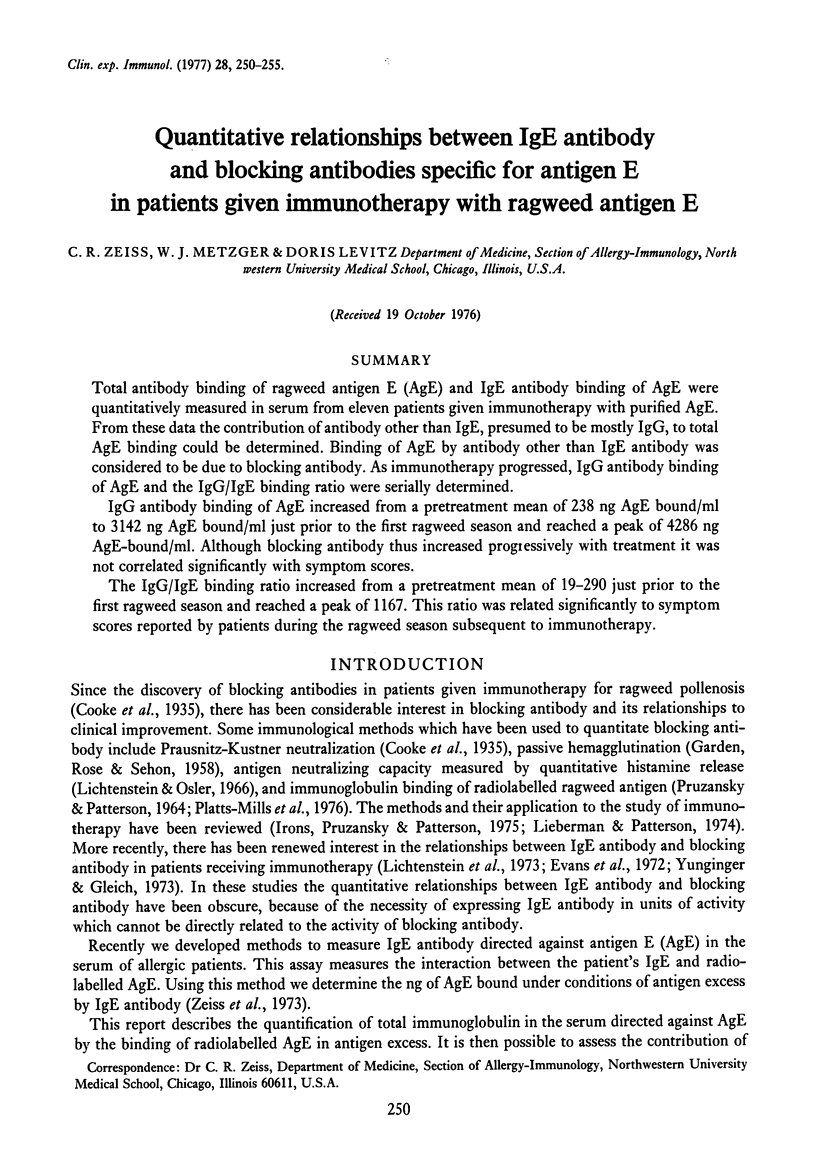

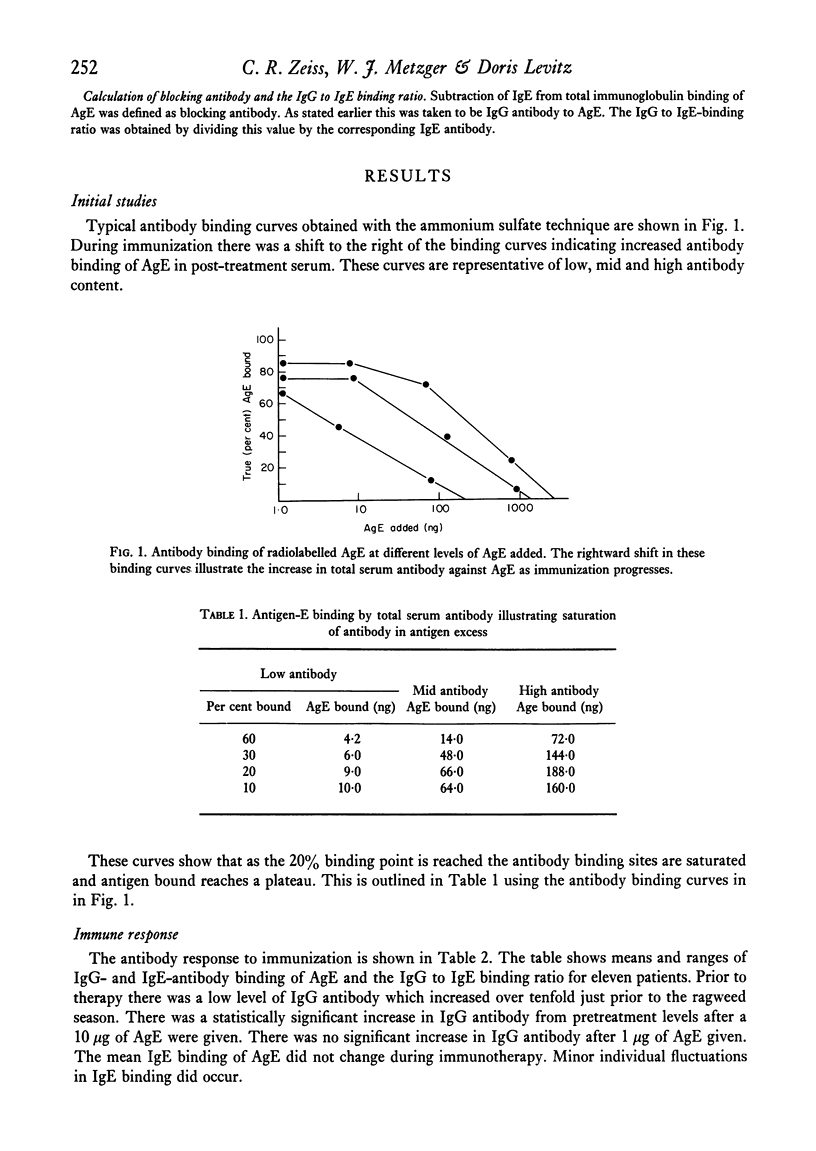
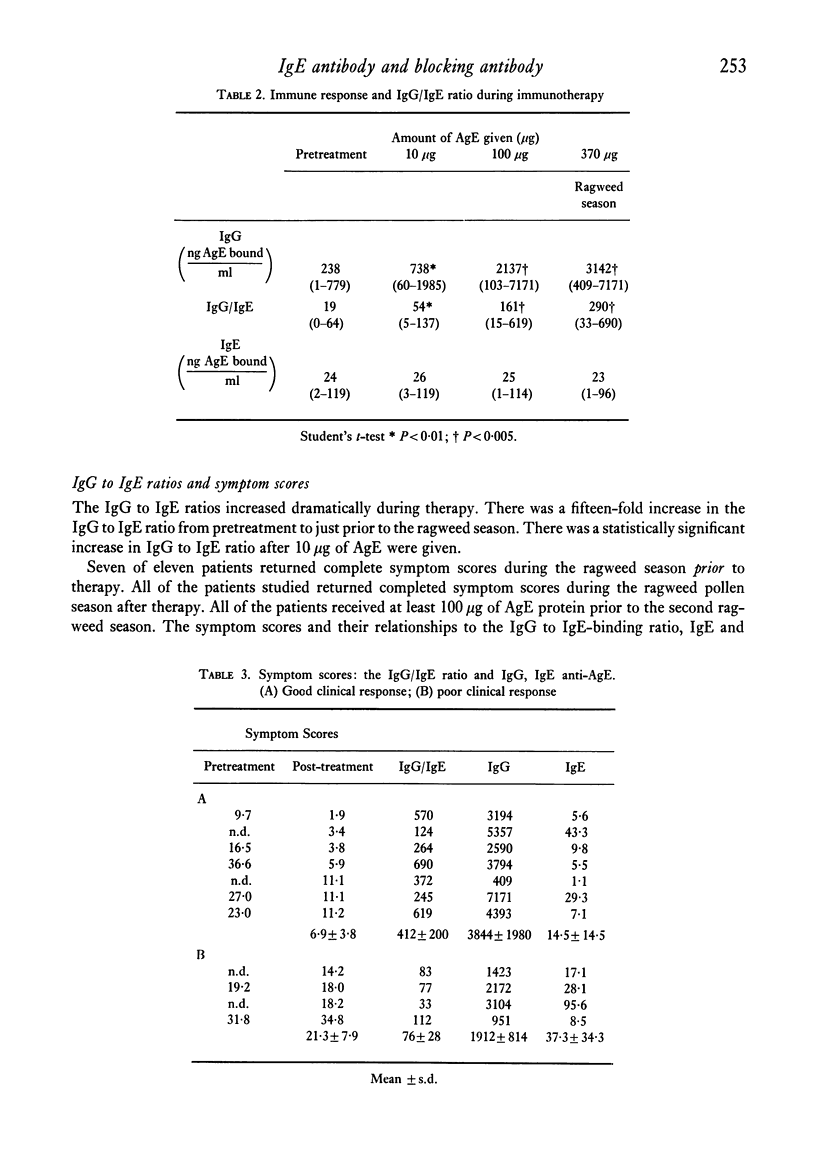
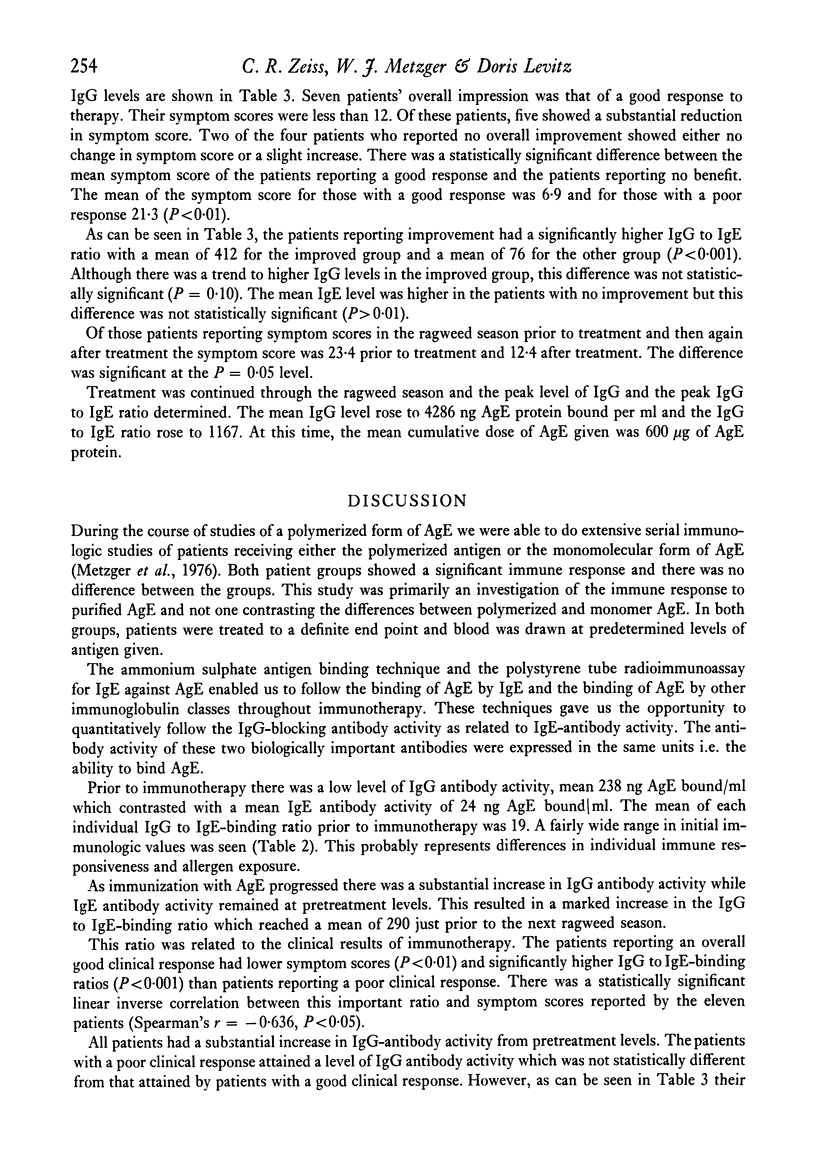
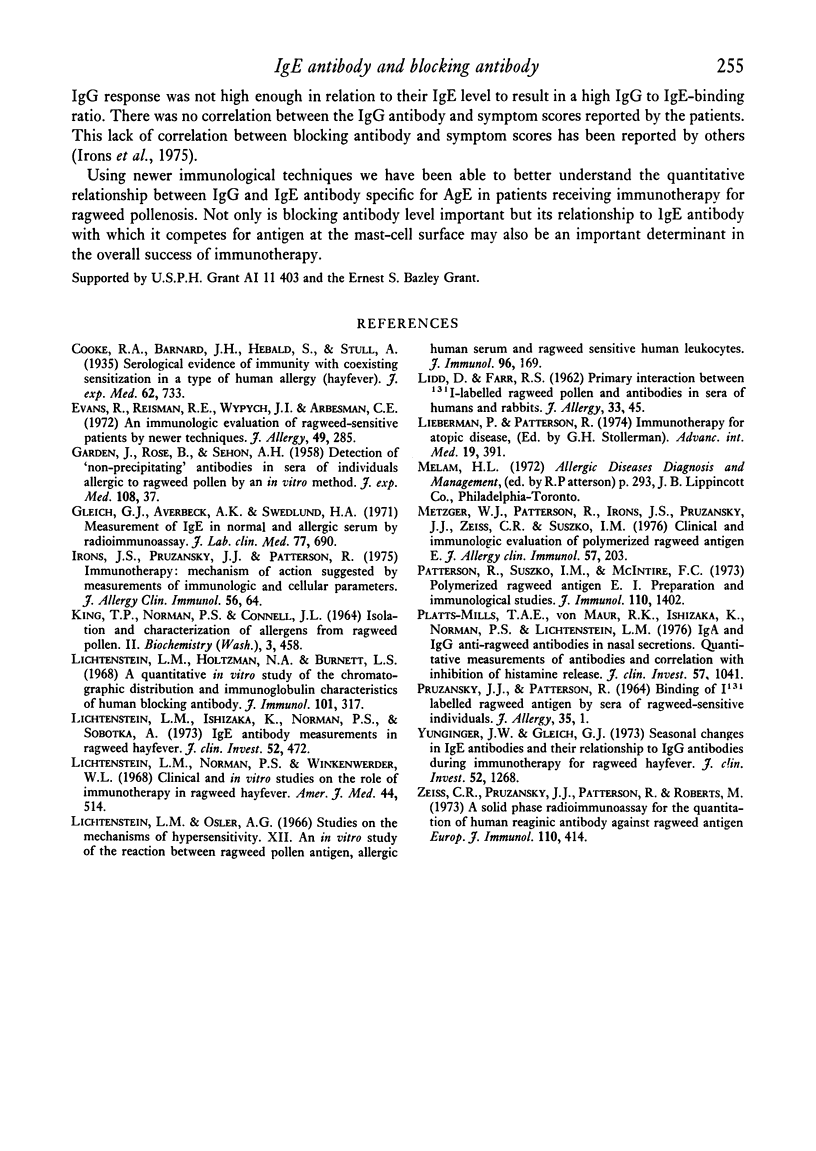
Selected References
These references are in PubMed. This may not be the complete list of references from this article.
- Evans R., Reisman R. E., Wypych J. I., Arbesman C. E. An immunologic evaluation of ragweed-sensitive patients by newer techniques. J Allergy Clin Immunol. 1972 May;49(5):285–291. doi: 10.1016/0091-6749(72)90096-6. [DOI] [PubMed] [Google Scholar]
- GORDON J., ROSE B., SEHON A. H. Detection of non-precipitating antibodies in sera of individuals allergic to ragweed pollen by an in vitro method. J Exp Med. 1958 Jul 1;108(1):37–51. doi: 10.1084/jem.108.1.37. [DOI] [PMC free article] [PubMed] [Google Scholar]
- Gleich G. J., Averbeck A. K., Swedlund H. A. Measurement of IgE in normal and allergic serum by radioimmunoassay. J Lab Clin Med. 1971 Apr;77(4):690–698. [PubMed] [Google Scholar]
- Irons J. S., Pruzansky J. J., Patterson R. Immunotherapy: Mechanisms of action suggested by measurements of immunologic and cellular parameters. J Allergy Clin Immunol. 1975 Jul;56(1):64–77. doi: 10.1016/0091-6749(75)90035-4. [DOI] [PubMed] [Google Scholar]
- KING T. P., NORMAN P. S., CONNELL J. T. ISOLATION AND CHARACTERIZATION OF ALLERGENS FROM RAGWEED POLLEN. II. Biochemistry. 1964 Mar;3:458–468. doi: 10.1021/bi00891a026. [DOI] [PubMed] [Google Scholar]
- LIDD D., FARR R. S. Primary interaction between I-131 labeled ragweed pollen and antibodies in the sera of humans and rabbits. J Allergy. 1962 Jan-Feb;33:45–58. doi: 10.1016/0021-8707(62)90062-x. [DOI] [PubMed] [Google Scholar]
- Lichtenstein L. M., Holtzman N. A., Burnett L. S. A quantitative in vitro study of the chromatographic distribution and immunoglobulin characteristics of human blocking antibody. J Immunol. 1968 Aug;101(2):317–324. [PubMed] [Google Scholar]
- Lichtenstein L. M., Ishizaka K., Norman P. S., Sobotka A. K., Hill B. M. IgE antibody measurements in ragweed hay fever. Relationship to clinical severity and the results of immunotherapy. J Clin Invest. 1973 Feb;52(2):472–482. doi: 10.1172/JCI107204. [DOI] [PMC free article] [PubMed] [Google Scholar]
- Lichtenstein L. M., Norman P. S., Winkenwerder W. L. Clinical and in vitro studies on the role of immunotherapy in ragweed hay fever. Am J Med. 1968 Apr;44(4):514–524. doi: 10.1016/0002-9343(68)90052-1. [DOI] [PubMed] [Google Scholar]
- Lichtenstein L. M., Osler A. G. Studies on the mechanisms of hypersensitivity phenomena. XII. An in vitro study of the reaction between ragweed pollen antigen, allergic human serum and ragweed-sensitive human leukocytes. J Immunol. 1966 Jan;96(1):169–179. [PubMed] [Google Scholar]
- Lieberman P., Patterson R. Immunotherapy for atopic disease. Adv Intern Med. 1974;19:391–411. [PubMed] [Google Scholar]
- PRUZANSKY J. J., PATTERSON R. BINDING OF I-131-LABELED RAGWEED ANTIGEN BY SERA OF RAGWEED-SENSITIVE INDIVIDUALS. J Allergy. 1964 Jan-Feb;35:1–6. doi: 10.1016/0021-8707(64)90042-5. [DOI] [PubMed] [Google Scholar]
- Patterson R., Suszko I. M., McIntire F. C. Polymerized ragweed antigen E. I. Preparation and immunologic studies. J Immunol. 1973 May;110(5):1402–1412. [PubMed] [Google Scholar]
- Platts-Mills T. A., von Maur R. K., Ishizaka K., Norman P. S., Lichtenstein L. M. IgA and IgG anti-ragweed antibodies in nasal secretions. Quantitative measurements of antibodies and correlation with inhibition of histamine release. J Clin Invest. 1976 Apr;57(4):1041–1050. doi: 10.1172/JCI108346. [DOI] [PMC free article] [PubMed] [Google Scholar]
- Yunginger J. W., Gleich G. J. Seasonal changes in IgE antibodies and their relationship to IgG antibodies during immunotherapy for ragweed hay fever. J Clin Invest. 1973 May;52(5):1268–1275. doi: 10.1172/JCI107294. [DOI] [PMC free article] [PubMed] [Google Scholar]
- Zeiss C. R., Pruzansky J. J., Patterson R., Roberts M. A solid phase radioimmunoassay for the quantitation of human reaginic antibody against ragweed antigen E. J Immunol. 1973 Feb;110(2):414–421. [PubMed] [Google Scholar]


